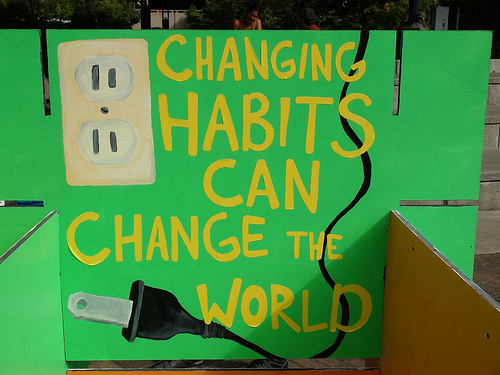Changing Employee Behaviors: Are You a True Agent of Change in Your Organization?
Sometimes there are so many communication elements that need change inside an organization that it can be overwhelming. It’s easy to think about making these changes in terms of tools (an internal social platform) or tactics (revamp the employee newsletter). But that’s jumping ahead. Where the real complexities lie – and where you must begin – is with an examination of employee behaviors and cultural habits that are creating roadblocks and problems inside the organization.
In The Power of Habit (a book I’ve become mildly obsessed with), author Charles Duhigg illustrates how organizational habits form and become ingrained as part of the culture. To affect real and widespread change, lies not in trying to change everything, but in identifying one or two “keystone” habits that have the power to shift and remake other patterns. He gives an example of when Paul O’Neill stepped into the CEO role at the then-fledgling aluminum manufacturer Alcoa. At his first investor meeting, O’Neill dodged questions about profits and capital ratios and, instead, put a laser focus on worker safety, stating that “safety will be an indicator that we’re making progress in changing our habits across the entire institution.” He knew that safety was an issue he could rally everyone around from unions to executives to employees. Alcoa’s net income grew five times larger over the course of his time as CEO.
In an interview for the book about his success, O’Neill stated: “you can’t order people to change…I decided I was going to start by focusing on one thing. If I could start disrupting habits around one thing, it would spread throughout the entire company.” For instance, one of the first measures he put into place was mandating that he hear about all worker accidents from VPs within 24 hours of the incident – and would hold everyone accountable to ensure it happened. That one step set off a series of changes in the communication systems of a traditionally rigid organization.
What I took to heart from all of this is the vital importance of linking communications programs to the big picture and management’s priorities. A healthy dialogue exists around better connecting marketing/communications to sales (and rightfully so), but there are critical issues beyond sales where communications can and does have a meaningful impact.
Les Landes, author of Getting to the Heart of Employee Engagement, got me thinking differently about this issue as well. He challenged a group of us attending a recent IABC St. Louis chapter luncheon to think about how we, as communicators, can be “agents of change” in our organizations. He pushed us to re-define our role, away from “making messages and managing media” and to “providing guidance and building relationships.”
Perhaps it’s time to step back and think about the major changes your organization and leadership are working toward. What kind of habits are in need of change? How can you be more of an agent of change to ensure communication systems support larger goals and get the best out of people?
Connect with Kellie:
Email: Kellie@blissintegrated.com
Twitter: @kshe
LinkedIn: Kellie Sheehan
